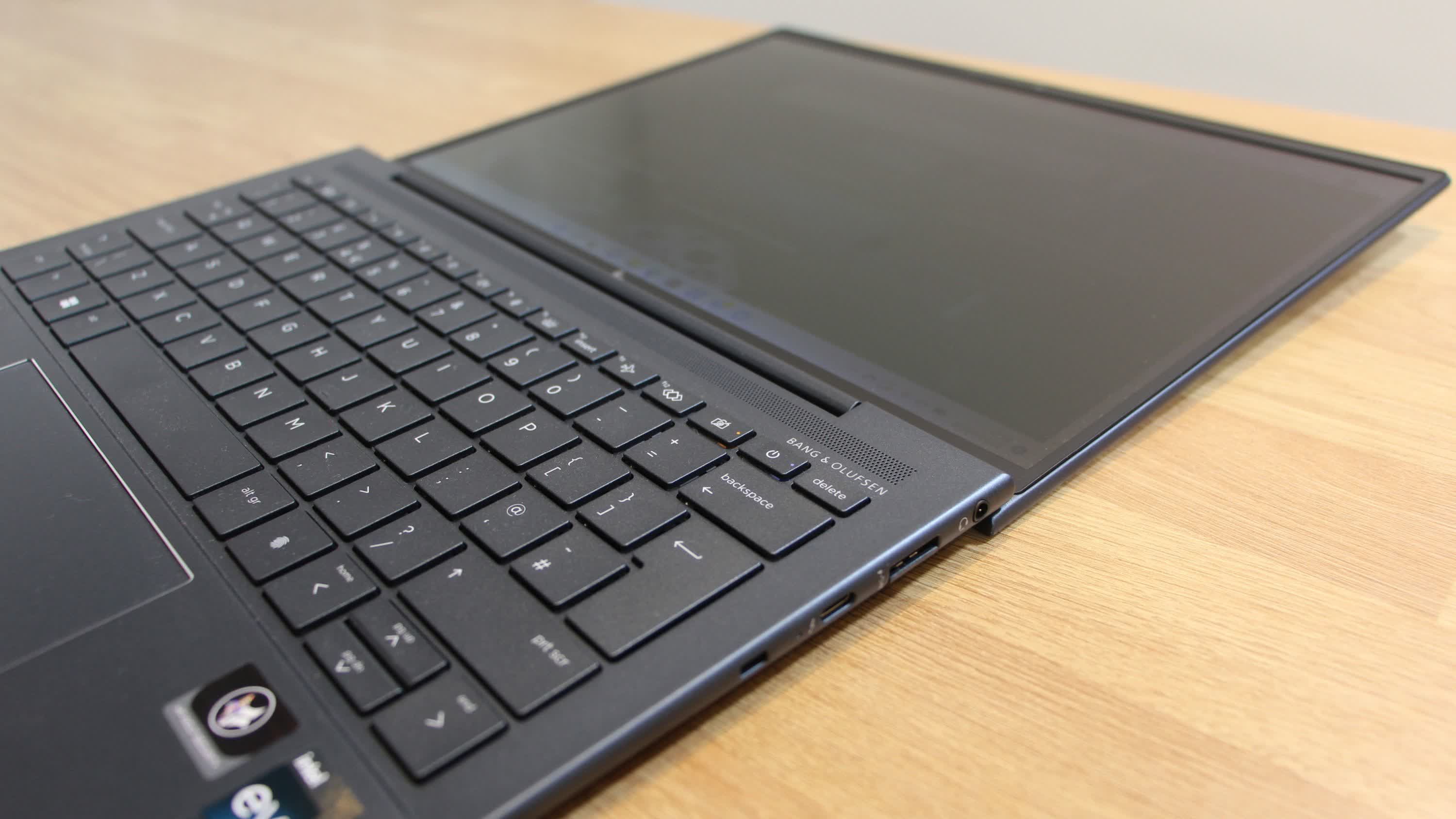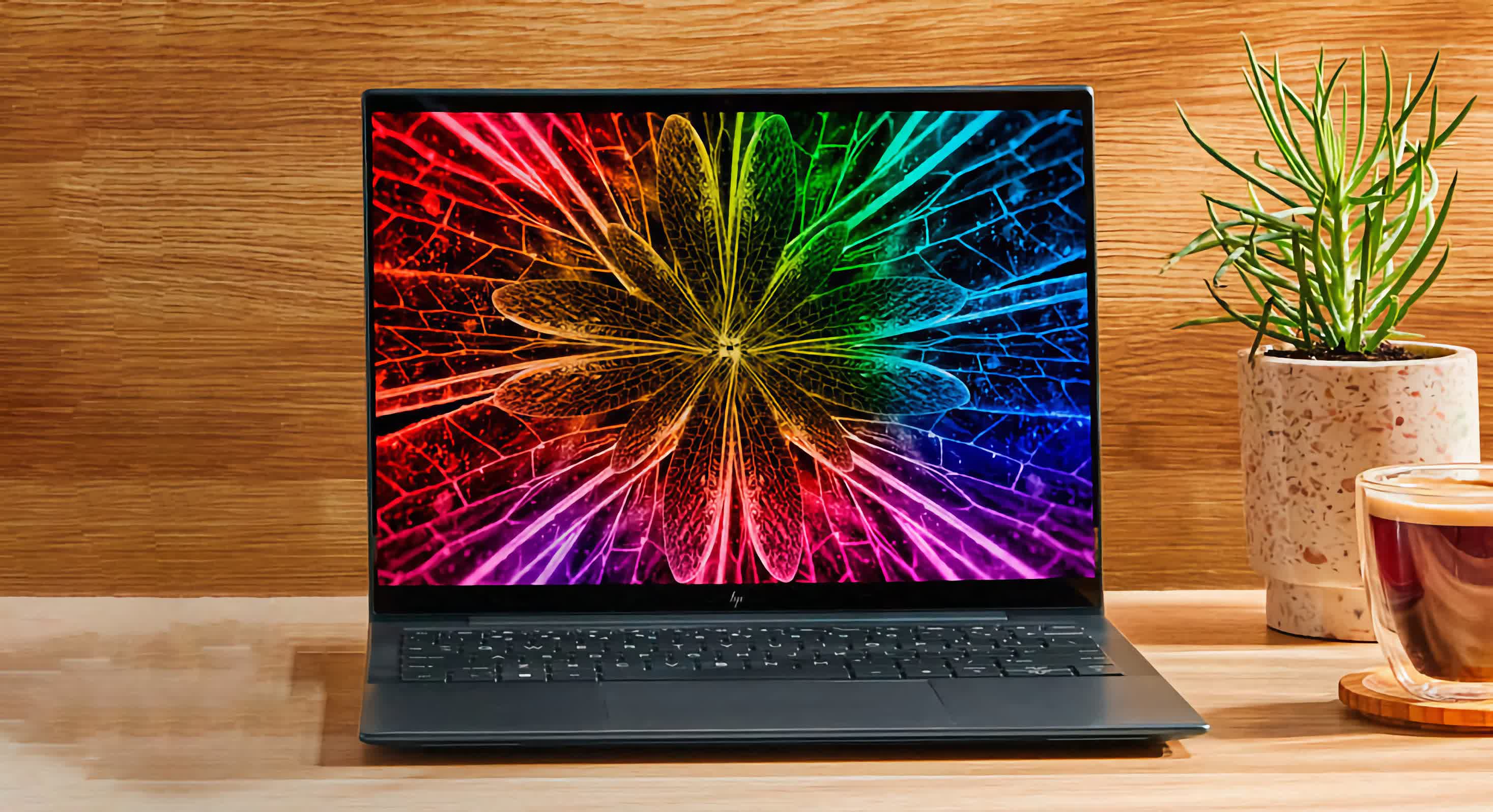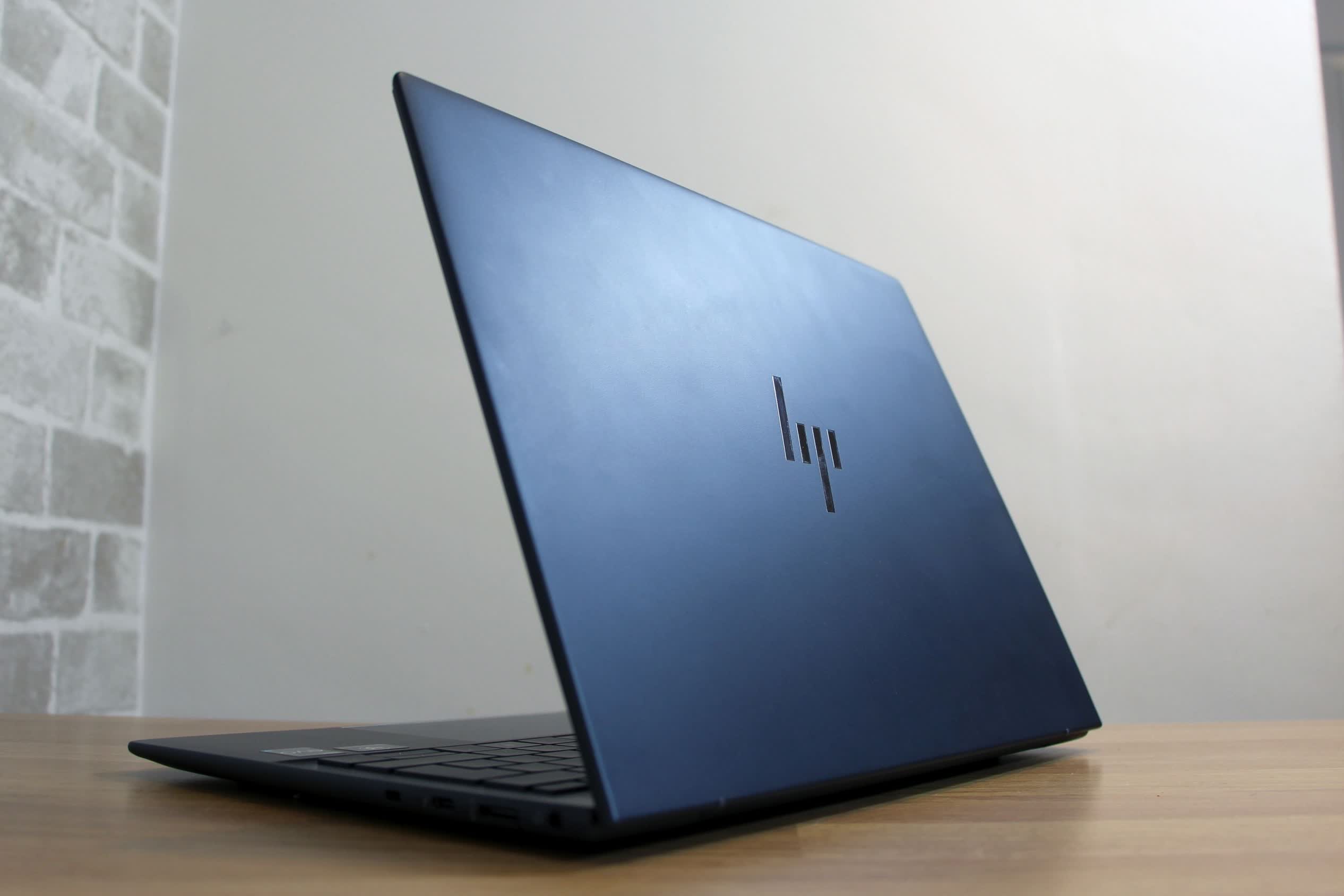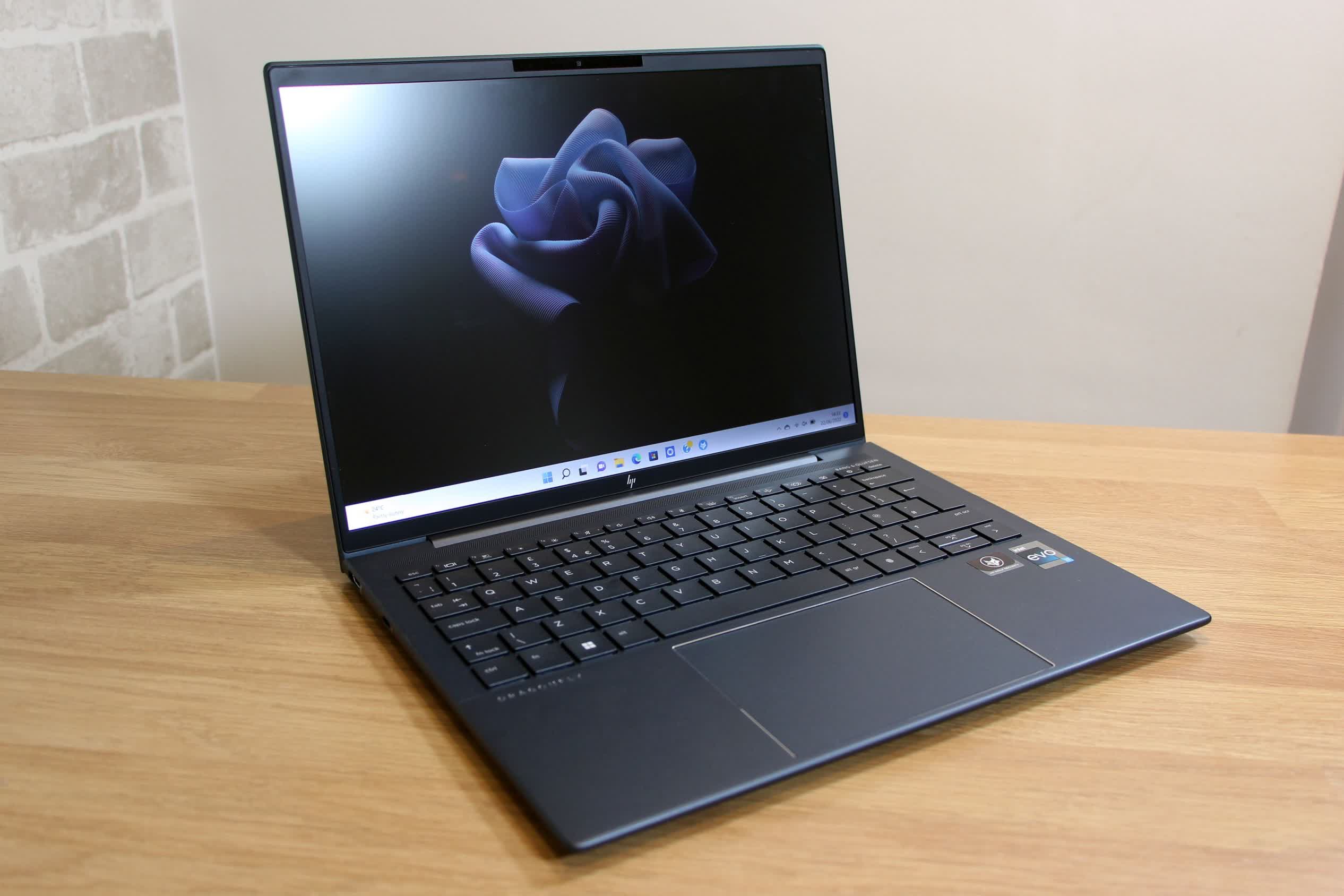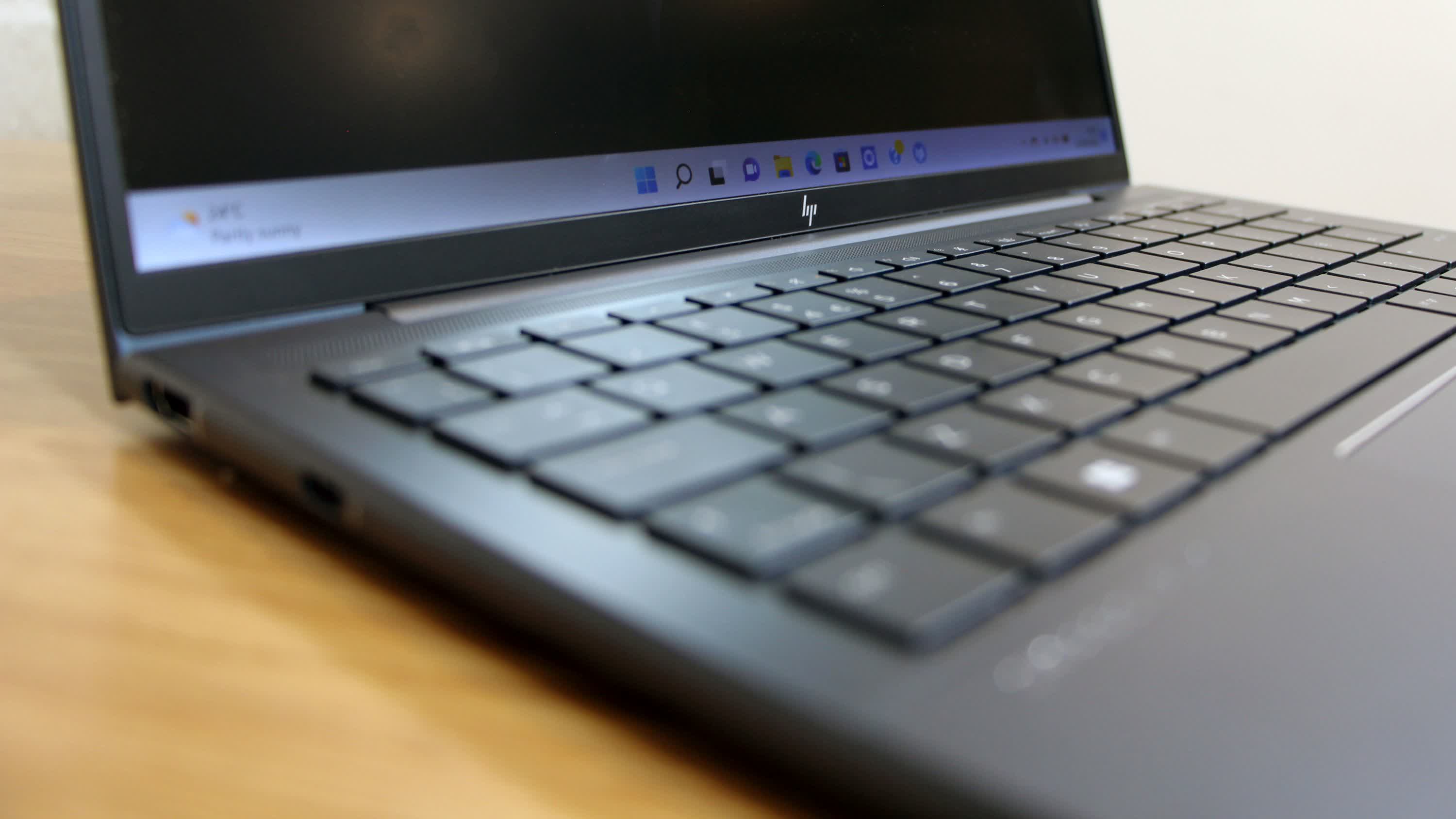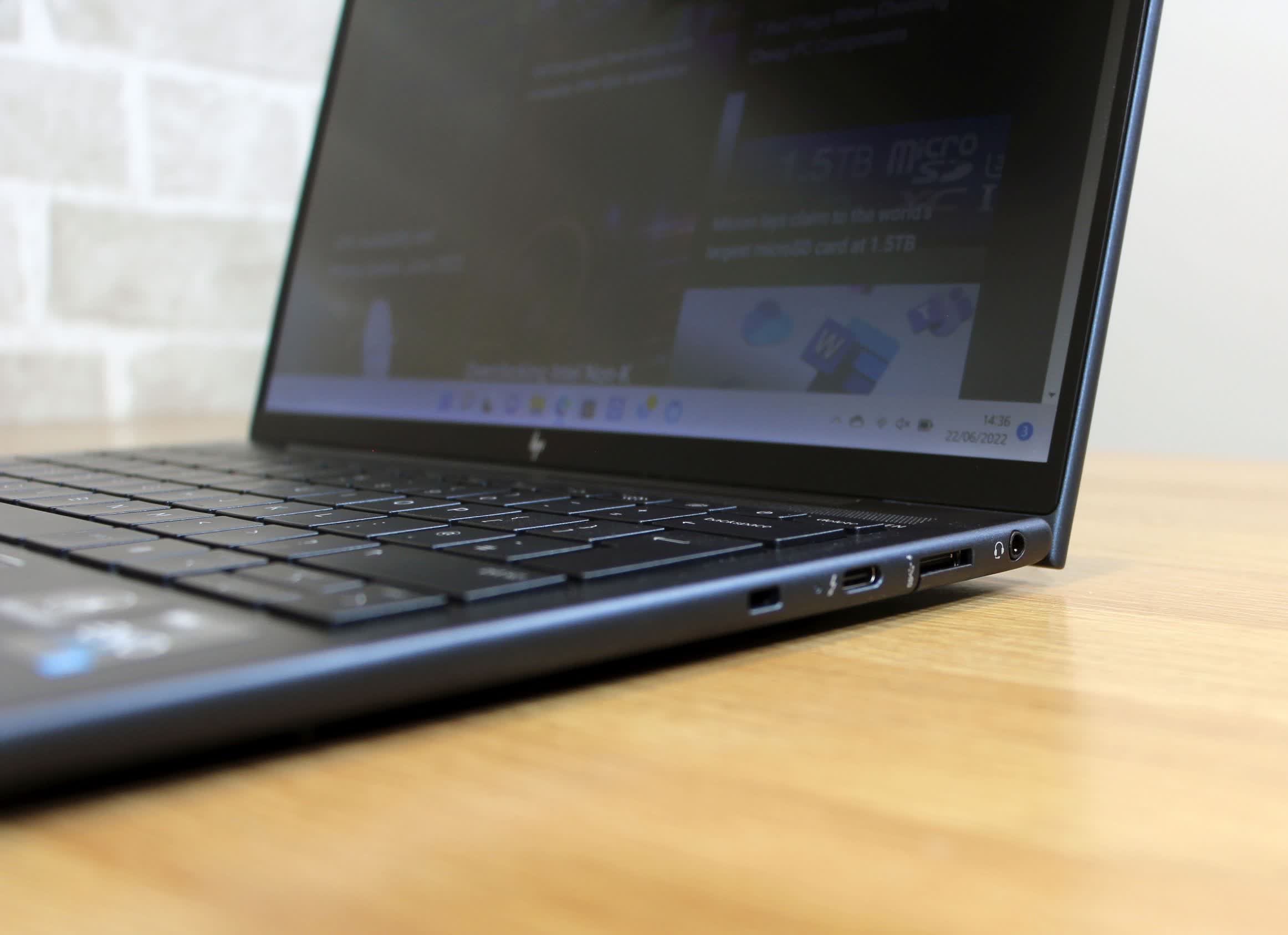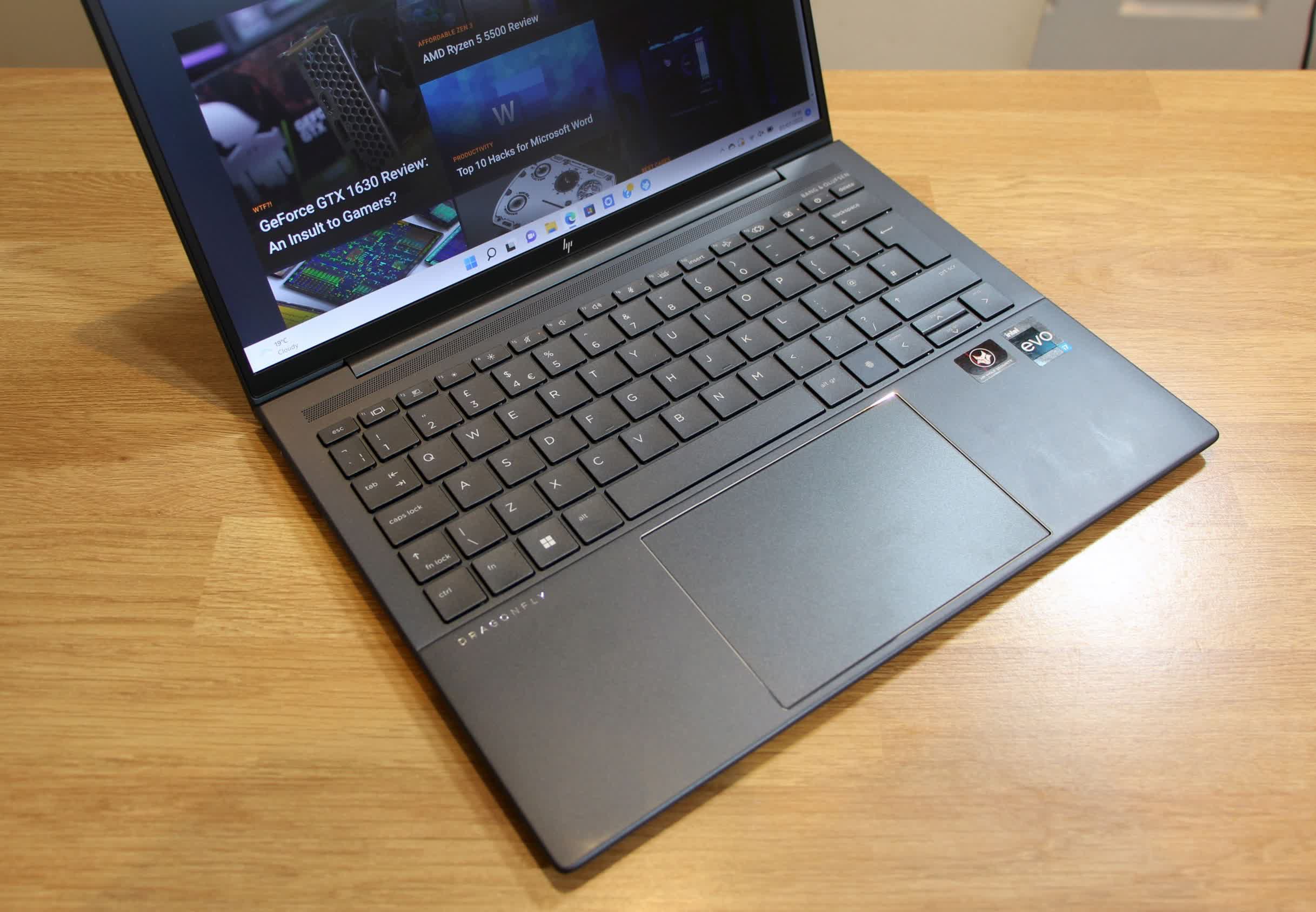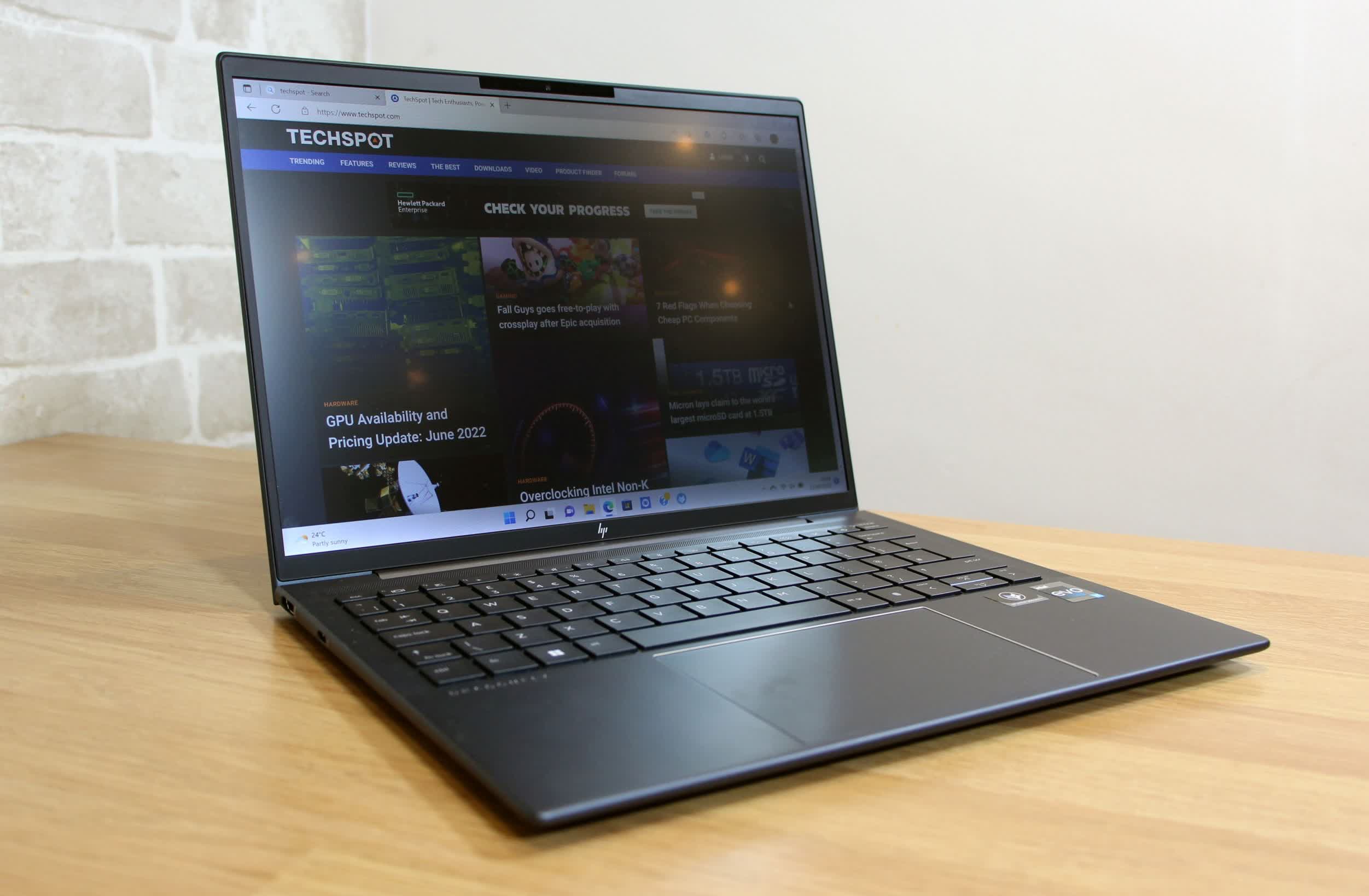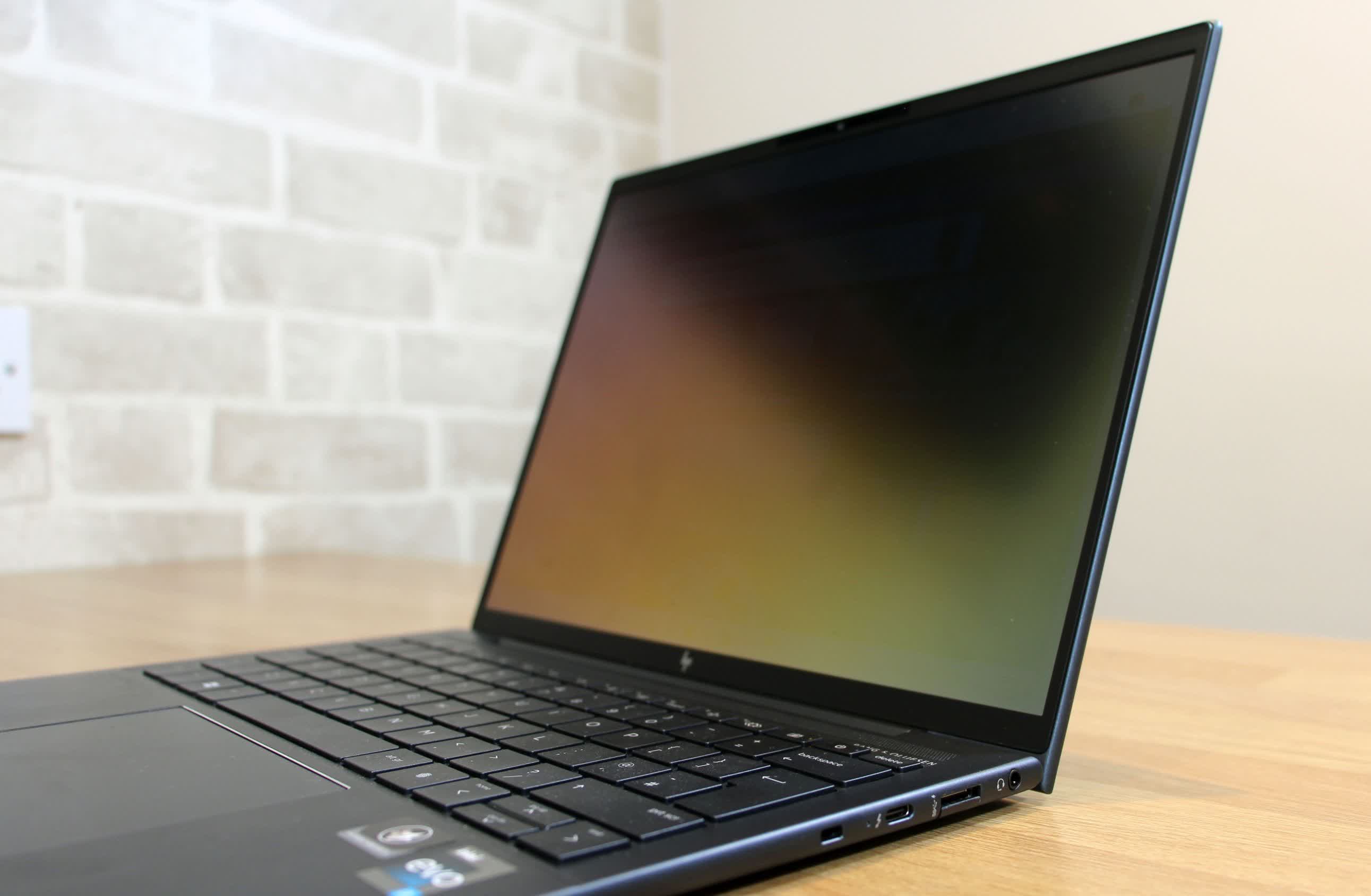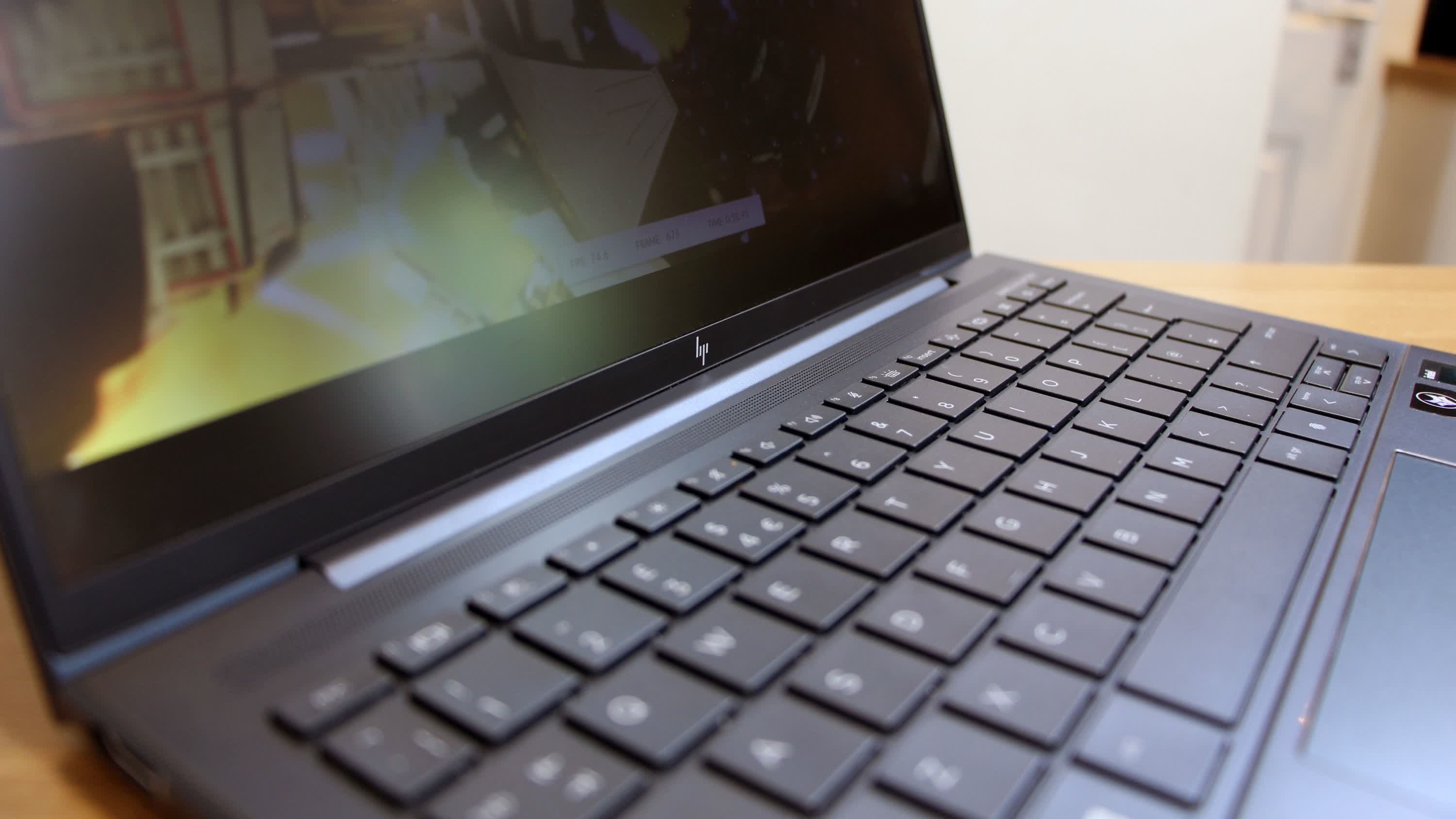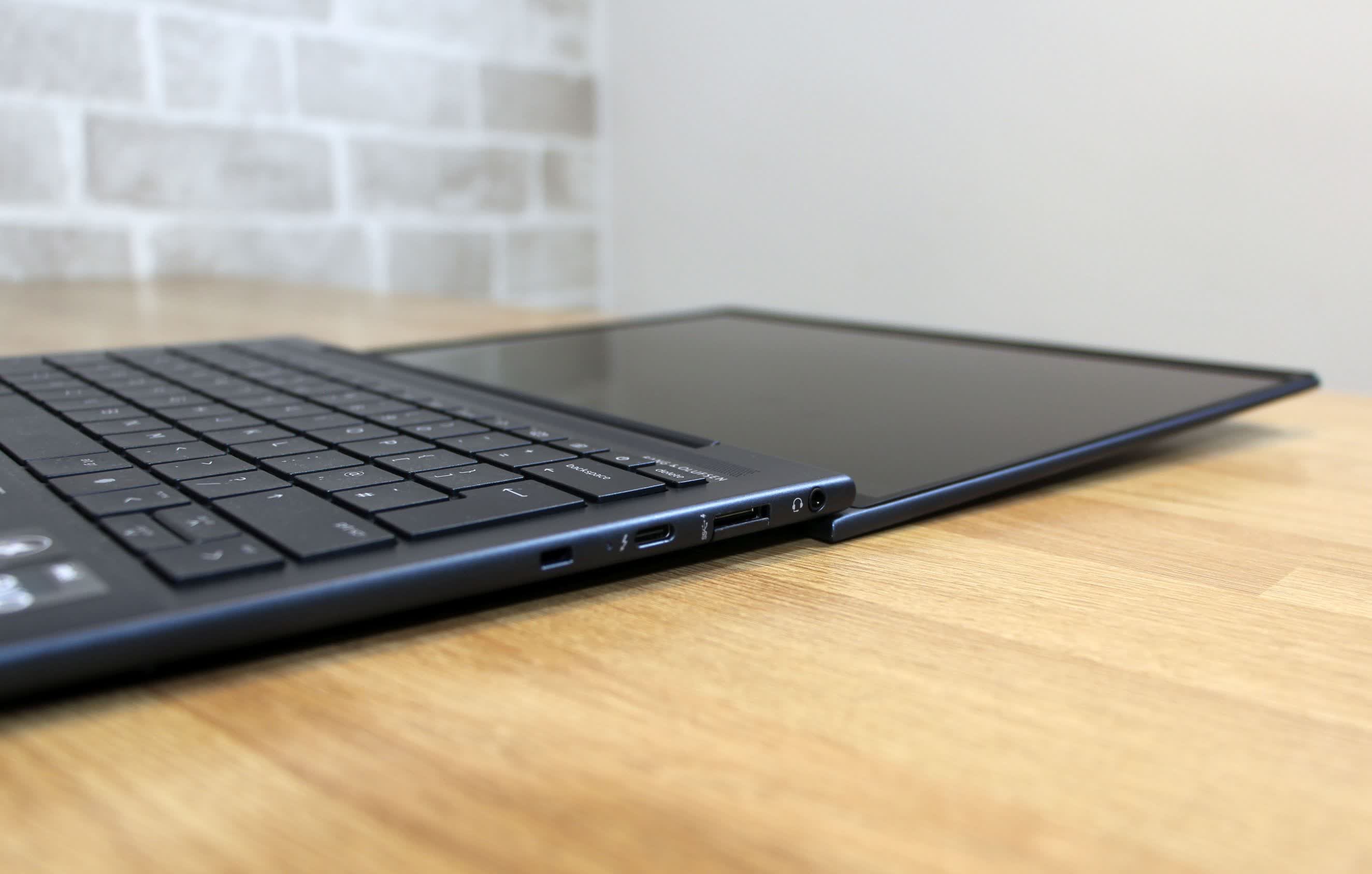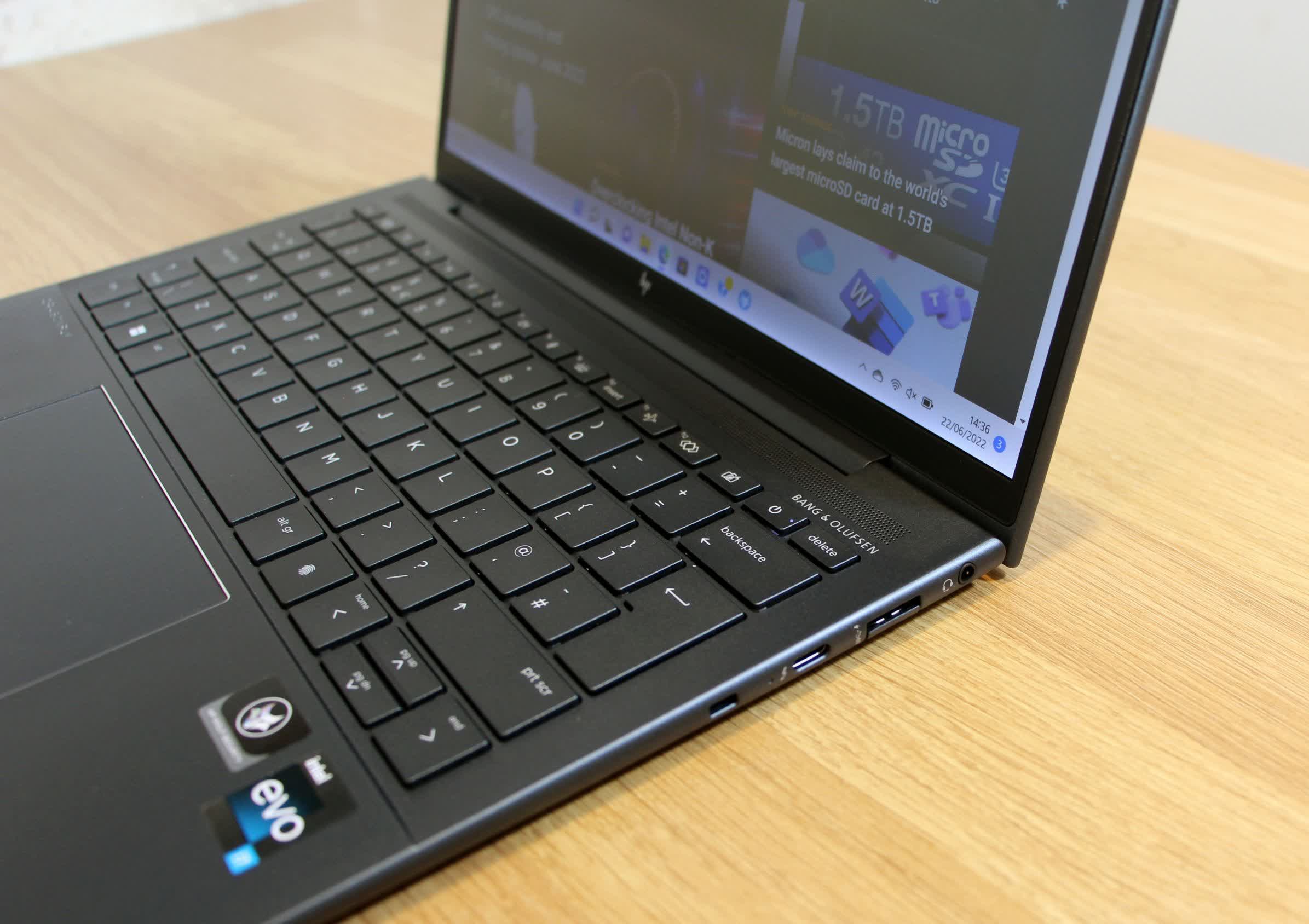For a long time if you wanted a business laptop you had to either choose an ugly machine packed with features or a stylish notebook that skimped on practicalities, but the HP Elite Dragonfly G3 tries to balance both.
From an aesthetic point of view the G3 is instantly impressive - it's hewn from magnesium and aluminum alloy and it's covered in classy touches. And on the inside, HP's latest deploys a 3:2 display, a new Intel Core i7 processor and plenty of security features.
There's a renewed focus on home and hybrid working with this notebook, too, which is no surprise. In practical terms that means buyers get a top-notch 5MP webcam with noise cancellation and face tracking to impress on video calls.
You'll have to pay around $2,000 to get your hands on this impressive, versatile notebook, though, and that's not cheap - other machines with competitive specifications are often far cheaper.
Features and Design
The Dragonfly G3 is a great-looking laptop. The aluminum and magnesium alloy on the outside comes in a slate blue color that isn't far removed from a deep gunmetal grey, and 90% of the metal in the casing is recycled - a boon for anyone who wants their tech to come with a side of environmental know-how.
Below the keyboard there's smart, indented Dragonfly lettering, and above the typing gear there's a subtle speaker grille. The edges are curved, the sleek HP logo on the lid glows with a chrome-effect finish, and the display's bezels are very slim. The laptop opens to a 180-degree angle, which aids collaborative working and viewing - although the Dragonfly G3's form factor does set it apart from the preceding G2, which was fully convertible.
Happily, this notebook isn't just about good looks. There's only a tiny bit of flex in the base and screen, which is to be expected in a small, slim laptop, and it's better here than many contemporaries. We have no qualms about its ability to survive in the real world - the Dragonfly's MIL-STD-810H testing ensures that it'll withstand drops, temperature changes, liquid and dust ingress and other extreme scenarios.
HP's robust build is all the more notable when you consider that this laptop weighs 2.49 pounds and it's only 16mm thick. The slim design means you'll barely notice the Dragonfly in your bag, and the sturdy exterior ensures it'll survive frequent trips between the home and office.
The Dragonfly's dimensions remain impressive after a look around the rest of the market. The latest Dell XPS 13 Plus is a bit slimmer but a tad heavier - just like the Microsoft Surface Pro 8 when you include its keyboard. The Apple MacBook Pro 13 weighs more. Only the forthcoming Asus ZenBook S 13 OLED is less bulky, with a 14.9mm body and 2.43-pound body. HP's laptop competes on the scales and, while looks are subjective, the darker HP holds its own against any of those rivals.
Even the power brick looks better than the connectors you'll get with other machines thanks to a braided monochrome cable that is pleasingly compact.
HP's machine has two Thunderbolt 4 ports, with one on each side of the chassis, and on the right-hand edge you'll find a USB 3.2 Gen 1 socket with a drop-down cover, an audio jack and a Kensington lock connector. The left-hand margin deploys an HDMI 2.0 output, and one of the Thunderbolt ports delivers 65W of external charging power.
On the inside, dual-band 802.11ax wireless and Bluetooth 5.2 provide connectivity; elsewhere, the HP has a fingerprint reader in the power button. Security options continue, with TPM 2.0 and HP's own Wolf system, which protects the BIOS, eliminates malware and includes great system management and recovery options. The Dragonfly also supports the Tile app, which can track the G3 and other devices with Tile tags attached, like luggage or wallets.
Only a couple of features are missing. You don't get Intel vPro on this Core i7-1255U model, but it's available with different processors if you configure the laptop yourself - including the i7-1265U. There's also no card reader.
Input, Camera, Build Quality
And then there's the webcam. The 5MP (2,560 x 1,920 pixels) resolution means you get crisper, sharper pictures than on the vast majority of other laptop shooters - no wonder when you consider that the Dell and Apple machines both have 720p lenses.
The camera isn't just detailed, colors are accurate without becoming oversaturated, face tracking is impressive, and it supports Windows Hello sign-in. The only things that didn't work well were the appearance filters, which were unsubtle and irritating. If you want a laptop with more imaging gear, your only option is the Surface, which pairs a 5MP webcam with a 10MP rear-facing camera.
HP has done a tremendous job with the Dragonfly's keyboard. The buttons strike a brilliant balance between the crispness needed for fast typing and the softness that keeps things comfortable for whole work days. The satisfying keys are quiet and quick, too.
The layout is fine, with a double-height Return key and large Space bar, but not perfect - the power button is annoyingly installed next to the Delete key, and other HP business laptops have an extra column of keys to hold the Home, PgUp and PgDn keys - and there's no sign of that here. There's no number pad, but that's almost a given on a small laptop.
The trackpad is good, too. It's large, uses haptic hardware to register fast, accurate clicks, and supports gestures.
Display Performance
There's lots to like about the display. The Dragonfly's panel has a 13.5" diagonal and an aspect ratio of 3:2, which makes it taller than conventional 16:9 or 16:10 screens. That's smart design: it means you get more vertical space than on most other notebook displays, making it easier to view more detail in documents and web browsers. For productivity, that's useful.
The panel's maximum brightness level of 775cd/m2 is pretty good and sits alongside a black point of 0.31cd/m2 to create a contrast ratio of 2,500:1. Those are fantastic figures, and their real-world impact is immediate: the Dragonfly has incredible low-end depth and high-end punch, there's plenty of nuance between different shades, and everything looks impressively vibrant. You won't get this kind of performance elsewhere unless you buy an OLED notebook.
The Dragonfly's delta E of 1.77 is great and the color temperature of 6,332K is similarly impressive - your eyes simply won't detect any accuracy issues. The HP's panel renders 99% of the sRGB color gamut at 105.3%, so it can display every shade needed by mainstream workloads without veering into the oversaturation that high volume figures can sometimes cause.
Those great benchmark results mean the HP works well in a wide variety of situations. It's bright enough for indoor and outdoor use and has the vibrancy to make media look fantastic. Its colors are accurate to do a great job with mainstream content creation like light photo editing, and your everyday browsing will look bold.
The speakers do a tremendous job by producing loud, well-balanced and detailed audio - easily good enough for music and media and easily the match of any rival.
The Dragonfly G3's display also has the HP Sure View privacy filter, which works very well - press F2 and people on either side of you simply won't see the display. The only downside here is a slight lack of brightness.
Sadly, though, the HP's display can't go beyond those everyday work and creative situations. It only produced 72.7% of the Adobe RGB color space and 74.9% of the DCI-P3 gamut, which isn't high enough to work in either color space.
And while the HP's resolution of 1,920 x 1,280 is great for everyday workloads, the Dell is available with a higher resolution if you pay more and the Apple, Asus, and Microsoft machines provide higher resolutions out of the box - and the former two have wider gamuts. Those are more suitable if you want a sharper display for creative work.
Performance
The HP Elite Dragonfly G3 can be configured with a number of different CPUs, but our review sample arrived with a Core i7-1255U - one of the first chips we've seen from Intel's new wave of low-power laptop CPUs.
The i7-1255U has a base power limit of just 15W and can boost to 55W, and it's designed to replace familiar parts like the Core i7-1165G7. This processor has two P-cores with hyper-threading alongside eight single-threaded E-cores. The P-Cores have base and boost speeds of 1.7GHz and 4.7GHz, while the modest E-Cores run at 1.2GHz and 3.5GHz.
The i7-1255U has Intel Iris Xe graphics with 96 execution units with a peak speed of 1250MHz, and the chip has 12MB of L3 cache.
That's a respectable specification for a low-power CPU, but this is one of the weaker parts from the new range. The i7-1260P, for instance, has four P-cores, a marginally faster GPU and more L3 cache with TDPs of 28W and 64W. AMD's Ryzen 7 6800U is another low-power contender thanks to eight multi-threaded Zen 3+ cores and a 2.7GHz base clock. If you'd like more information about the i7-1260P and 6800U, we've already taken a deep dive into those parts.
The new CPU sits alongside 16GB of DDR5 memory and a 512GB WD SN530 SSD with mediocre read and write speeds of 2,436 MB/s and 1,818 MB/s. Those SSD results are good enough to keep the Dragonfly feeling responsive, but they're unimpressive in the overall scope of things.
In Cinebench R23's single- and multi-core benchmarks the Dragonfly scored 1,552 and 5,796. Those are reasonable figures: both easily beat the i7-1165G7 used in the Surface Pro 8, and they're fast enough to enable slick everyday computing, loads of browser tabs and some light photo-editing.
The i7-1260P though is far faster, especially in the multi-core run. The AMD Ryzen 7 6800U is miles better in multi-core tests, too. The low-power i7-1255U couldn't gain ground elsewhere. In the PCMark 10 Application test the i7-1255U scored 10,803, which beat the older Intel chips and AMD's new silicon but falls behind the i7-1260P.
Single-threaded pace is Intel's traditional stronghold, but the i7-1255U's Excel result of 15.417s cannot compete against the aforementioned CPUs.
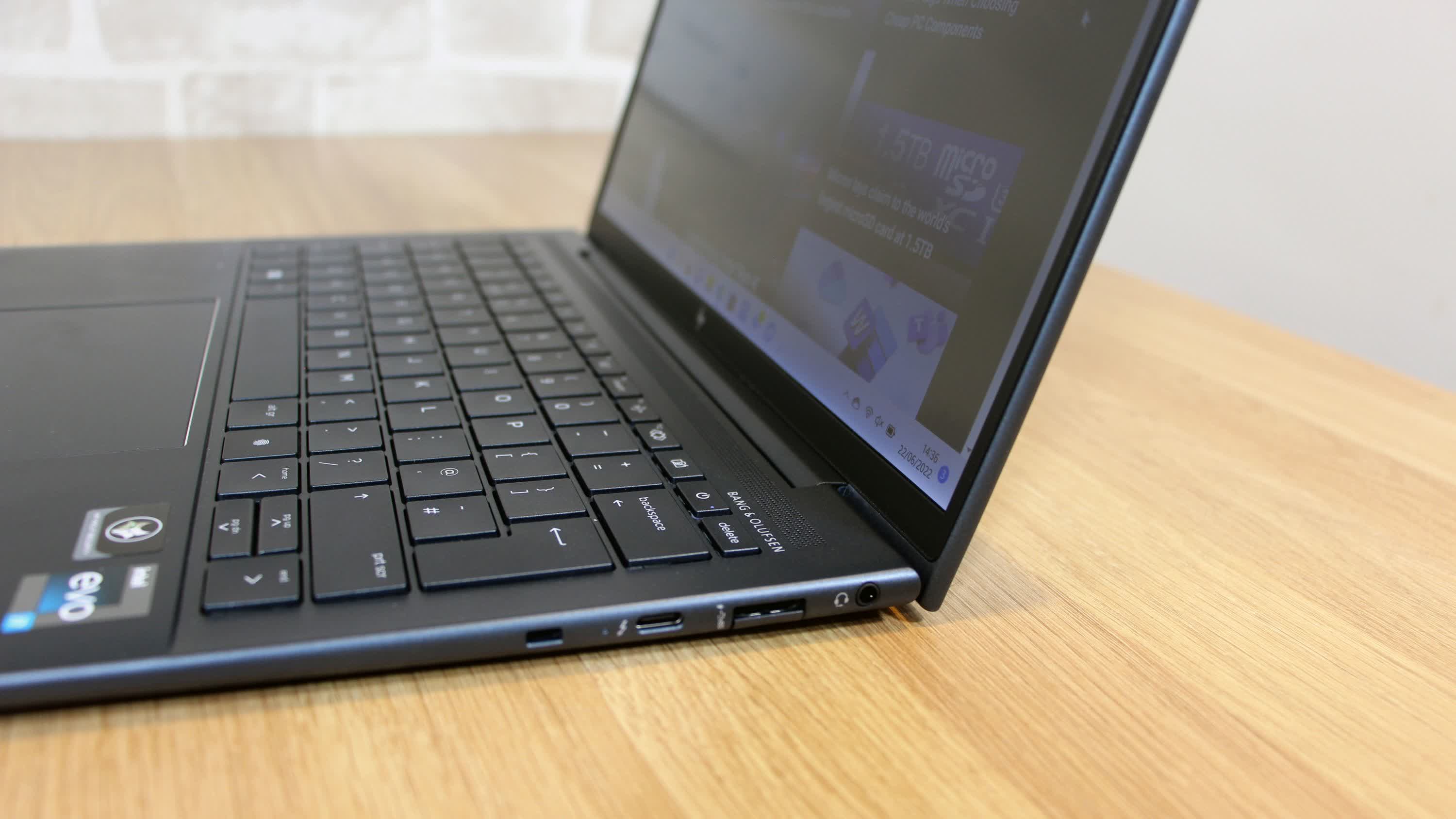
These results are no surprise considering the i7-1255U's modest specification, and it's not all bad news - there's still enough power here for everyday tasks. For more challenging apps and core-heavy tasks, though, this chip isn't good enough - you'll find more ability from beefier Intel CPUs, the MacBook Pro's M2 and the AMD Ryzen 7 6800U.
Stress-testing reveals that the CPU's P-cores peaked at 2.1GHz in an all-core benchmark and 3.1GHz in a single-core test - speeds that are some way short of what the CPU can theoretically achieve. It's not unusual for slim laptops to exhibit throttling and the i7-1255U ran at more appropriate clocks when the chip wasn't handling consistent, high-end workloads, but it's more evidence that the Dragonfly is better-suited to everyday tasks and bursts of activity rather than anything strenuous.
This is not the laptop to buy if you want to enjoy some after-hours gaming, either. In Rainbow Six Siege the Iris Xe core inside the Dragonfly delivered an average of 49 fps - a result that's comparable to other Intel CPUs but miles behind the RDNA2 core inside the new AMD Ryzen 7 6800U. The pattern repeated in Gears 5, where the i7-1255U returned an underwhelming average of 24 fps.
The limited CPU does mean the Dragonfly delivers good thermal performance. You'll only hear fan noise if you put your ear right up to the casing - and, even then, it's extremely quiet. The metal above the keyboard and on the underside gets a bit warm with prolonged CPU usage, but the temperatures are never an issue.
It helps with battery life, too. In PCMark 10's Applications battery life benchmark with Wi-Fi enabled and the display at 200 nits the HP lasted for 14 hours and 26 minutes. The HP still lasted for 9 hours and 40 minutes with the display at maximum brightness, and those results improved further (by as much as 90 extra minutes) when the Dragonfly ran less-demanding workloads.
It's good longevity, and you'll always make it through a full workday with this notebook - and in most situations it'll handle the commute, too. This battery life will likely compare well to other machines, too.
Wrap Up
In the context of Windows ultraportables, the HP Elite Dragonfly G3 offers better battery life than most machines, and the HP impresses elsewhere. It's got lots of practical business features inside a svelte, good looking, and robust enclosure. The 3:2 display offers good vertical space, incredible contrast and accurate sRGB colors.
The keyboard is intuitive, the speakers are great, and the 5MP webcam is crisp and versatile. And while that Intel CPU can't keep up with other chips, it's still got the power for everyday computing.
For all of that, though, your starting price hovers around $2,000 for a Core i5 model or an extra $200 for a Core i7 (both with 16GB RAM, 512GB NVMe SSD). Using HP's online configuration tool to cut the spec down the laptop will cost at least $1,914 for the entry-level model that uses a Core i5 processor and omits the super-bright screen and larger SSD.
The configuration tool allows users to deploy processors with vPro, NFC modules, mobile broadband and a range of accessories and extended warranties, but they all raise the price.
That price is a problem. If you want to replicate the specification of the HP we've reviewed on a Dell XPS 13 Plus it'll cost you $1,549 and only $1,849 with an OLED or 4K display. The MacBook Pro 13 costs $1,699 with 16GB of memory. The Surface Pro 8 sits at $1,599 with an equivalent specification, and the Asus ZenBook should land at $1,500 or less.
If you like the sound of the HP Elite Dragonfly G3's range of features, its lightweight design, the 3:2 display, or the impressive battery life then this machine justifies the price - and while it falls behind in some areas, it has no big weaknesses. But if those aspects aren't vital for you, we'd shop around before making a buying decision.
Shopping Shortcuts
- HP Elite Dragonfly G3 on HP Store
